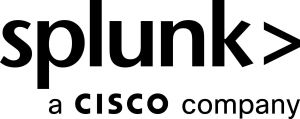Managing Dell Isilon network attached storage
As a storage engineer you need to monitor your Dell Isilon storage clusters to keep track of capacity utilization and make sure users have access to what they need. Since you have several Isilon clusters, you want to consolidate all the Isilon activity logs into one place for capacity planning and troubleshooting. You want to use Splunk for that purpose.
You can use Splunk software to understand key metrics related to your Dell Isilon NAS, including CPU utilization and cluster throughput. You can also watch for anomalies, such as user access failures and other events of interest shown in audit logs.
Data required
- Splunk Heavy Forwarder
- Isilon NAS Cluster
- Dell EMC Isilon data
If you use syslog to send the Isilon data, Splunk's recommendation is to use a syslog server. You may have syslog infrastructure already in place.
How to use Splunk software for this use case
You can run many searches with Splunk software to manage Dell Isilon network attached storage. Depending on what information you have available, you might find it useful to identify some or all of the following:
Next steps
To maximize their benefit, the how-to articles linked in the previous section likely need to tie into existing processes at your organization or become new standard processes. These processes commonly impact success with this use case:
- Storage monitoring in the NOC
- Capacity planning
- Compliance and audit reporting for security
Measuring impact and benefit is critical to assessing the value of IT operations. The following are example metrics that can be useful to monitor when implementing this use case:
- Throughput for file system and network
- Event rate by event type, such as read, write, getAttr, rename, and setAttr
- Number of locked and blocked nodes
- Cache hit and miss rates
- Number of operations over time
- Number of client connections
- Latency
Additional resources
This use case is also included in the IT Essentials Learn app, which provides more information about how to implement the use case successfully in your IT maturity journey.

